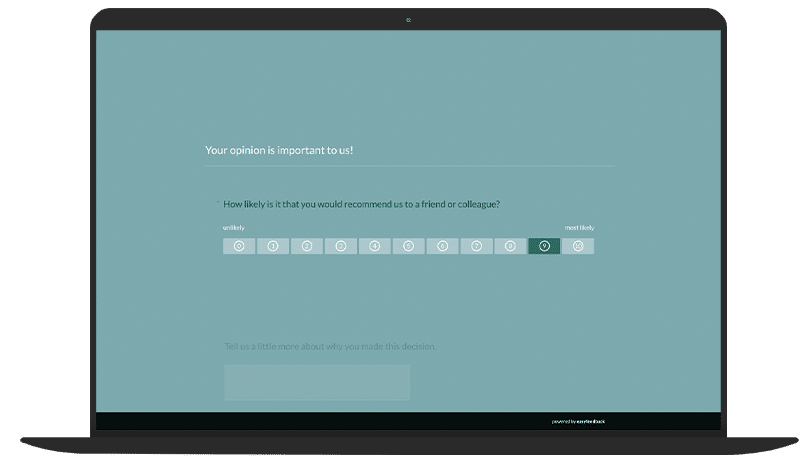What does customer loyalty mean?
Customer loyalty refers to a company’s ability to build and maintain long-term and loyal relationships with its customers.
It is about not just acquiring customers once, but getting them to make regular purchases from a company or use its services.
Customer loyalty is an important aspect of marketing and customer relationship management, as loyal customers often generate higher sales and are also willing to make positive recommendations for the company.

To achieve customer loyalty, companies must offer high-quality products or services, provide excellent customer service, understand and respond to customer needs and develop targeted marketing and communication strategies to retain and inspire customers.
What is the goal of customer retention?
The aim of customer loyalty is to build and maintain long-term and loyal relationships with a company’s customers.
Through customer retention, a company strives to get its customers to regularly buy products or services and identify with the brand.
Customer retention has several benefits, including:
1. Increase in sales:
Loyal customers tend to shop with a company more often and spend more money, which leads to an increase in sales.
2. Cost savings:
Acquiring new customers is often more expensive than retaining existing customers. Customer loyalty can reduce marketing and sales costs.
3. Word of mouth and recommendations:
Loyalty leads to customers recommending the company to others in a positive way and thus gaining new customers.
4. competitive advantage:
Companies with strong customer loyalty are generally better positioned against the competition, as they have a loyal customer base that is less susceptible to offers from competitors.
Overall, the aim of customer retention is therefore to create a loyal customer base that contributes to the company’s long-term success and competitiveness.
Why is customer loyalty important?
Customer loyalty is crucial for the long-term success of a company.
By retaining customers, companies can not only increase their turnover, but also reduce their costs.
Loyal customers make regular purchases from a company and are more willing to accept higher prices.

In addition, they are often inclined to make positive recommendations for the company and thus gain new customers.
Customer loyalty also provides companies with a competitive advantage as it helps to stabilize the customer base and make them less vulnerable to competition.
In addition, customer retention allows companies to build valuable customer relationships, which in turn further strengthens customer loyalty and increases the company’s long-term profitability.
What is the difference between customer retention and customer acquisition?
Customer retention and customer acquisition are two different concepts in the field of marketing and customer relationship management.
Customer acquisition refers to the process of attracting new customers to a company and getting them to buy products or services for the first time.
This includes various marketing and sales activities such as advertising, promotions, sales promotion and direct marketing, which aim to make potential customers aware of the company and motivate them to buy.
Customer retention, on the other hand, refers to the maintenance and development of relationships with existing customers to ensure that they remain loyal to the company and regularly purchase products or services.
This can be done through excellent customer service, personalized offers, loyalty programs and other measures aimed at increasing customer satisfaction and loyalty.

The main difference between customer retention and customer acquisition is therefore that customer acquisition aims to acquire new customers, while customer retention aims to retain existing customers and strengthen their loyalty.
However, both concepts are important for the long-term success of a company, as they help to increase sales and boost profitability.
What are customer loyalty measures and factors?
There are various measures and factors that you can take to strengthen customer loyalty.
Some of these measures include:
1. Excellent customer service
Provide outstanding customer service that is responsive to customers’ needs and concerns.
Train staff appropriately and ensure they are friendly, helpful and knowledgeable.
2. Loyalty programs
Implement loyalty programs where customers receive rewards, discounts or other benefits when they regularly shop with your company.
Loyalty programs reward customers for their loyalty and encourage them to continue shopping with you.

3. Personalized communication
Use customer data to create personalized communications that are tailored to the individual needs and preferences of customers.
Personalized offers, recommendations and messages show customers that they are valued and understood.
4. Obtain customer feedback
Regularly ask for feedback from your customers to find out what they value and which areas can be improved.
Show that you take the feedback seriously and use it to continuously improve your products, services and processes.
5. Events and community engagement
Organize events or activities to engage with your customers and build a community around your brand.
This can help to build an emotional connection with your customers and bind them more closely to your company.
6. Special promotions and gifts
Surprise your customers from time to time with special promotions , gifts or exclusive offers to show your appreciation and reward them.
How can you measure customer loyalty?
Measuring your customer loyalty is an important aspect of customer relationship management.
You can measure customer loyalty in various ways to determine how strong the bond between your customers and your brand is and how satisfied they are with your products or services.

One way to measure customer loyalty is to conduct regular customer satisfaction surveys.
These surveys can provide you with information about how satisfied your customers are with different aspects of your business and which areas may need improvement.
You can also analyze customer retention rates to determine how many customers regularly purchase from you or use your services.
The frequency of repeat purchases and customer retention rates can be important indicators of how loyal your customers are and how effective your customer retention strategies are.
The Net Promoter Score (NPS) is another metric you can use to measure customer loyalty. The NPS measures the likelihood that a customer would recommend your company to friends or colleagues.

A high NPS can indicate that your customer loyalty is strong and that your customers are satisfied with your products or services.
Additionally, you can look at the customer win-back rate to determine how successful you are at winning back lost customers.
A high win-back rate can indicate that you are taking effective measures to retain customers and that customers who have left your business can be encouraged to return.
By regularly measuring these and other metrics, you can determine how well you are performing in terms of customer retention and where there is room for improvement.
This allows you to continuously adjust and optimize your customer retention strategies to build long-term and profitable customer relationships.
Conclusion: Customer loyalty – an important success factor
In this article, we have looked at the various aspects of customer loyalty, from the basics to proven strategies.
We have seen how the quality of customer service, personalized communication, loyalty programs and other measures can help to strengthen customer loyalty.
It’s important to recognize that customer retention is an ongoing process that requires regular adjustments and tweaks to meet customers’ ever-changing needs and expectations.
Especially at a time when companies are vying for consumer favor, customer loyalty plays a central role in long-term success.
It is not only crucial for sales, but also for the stability and growth of a company.




